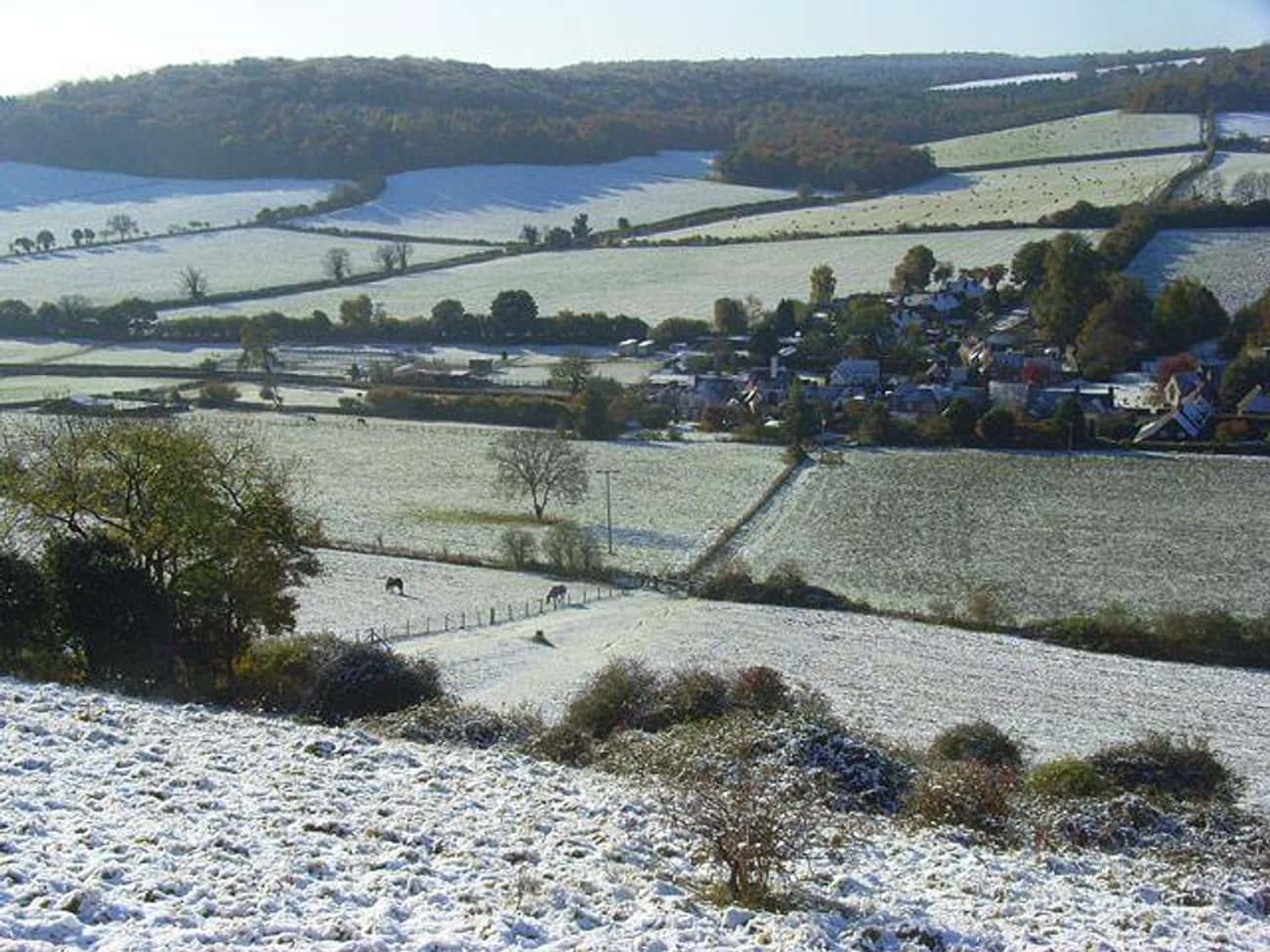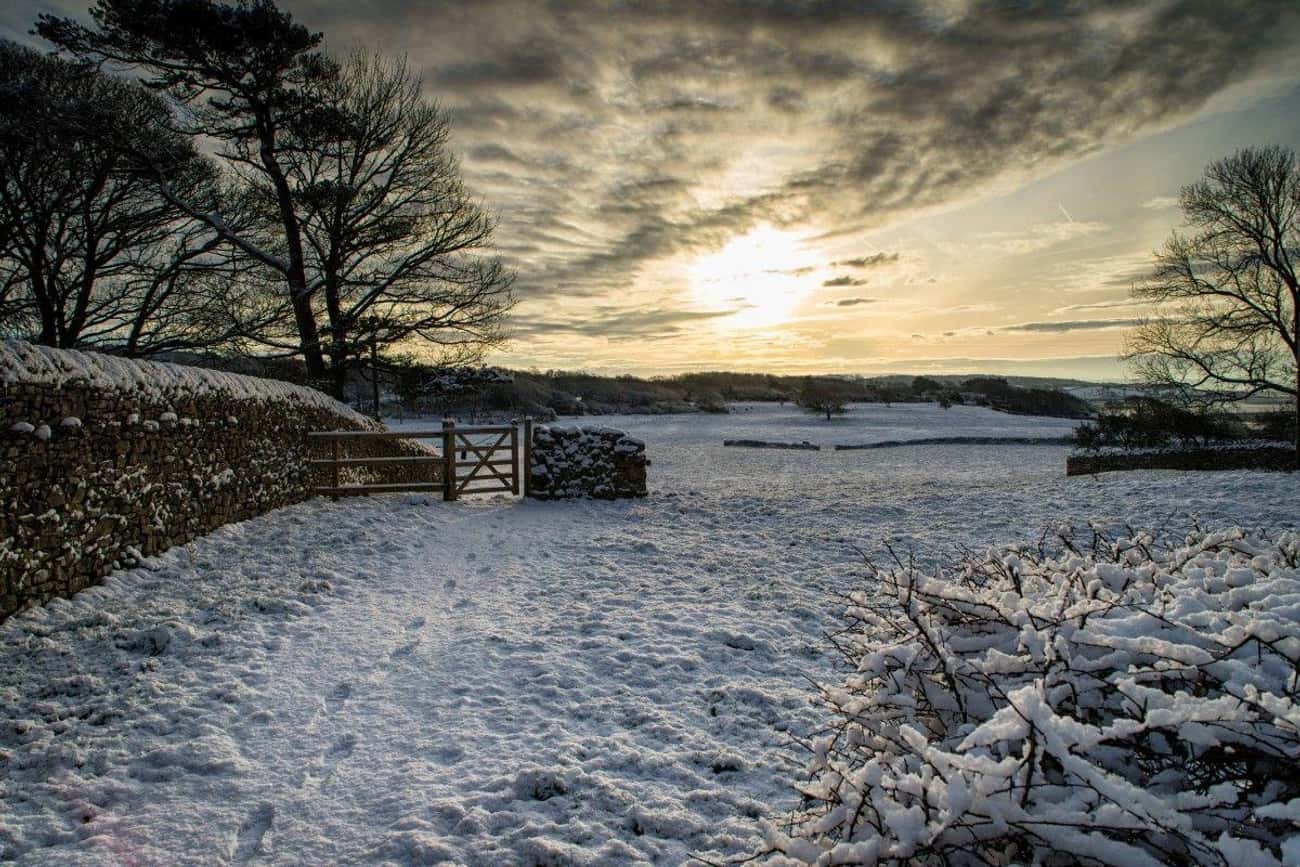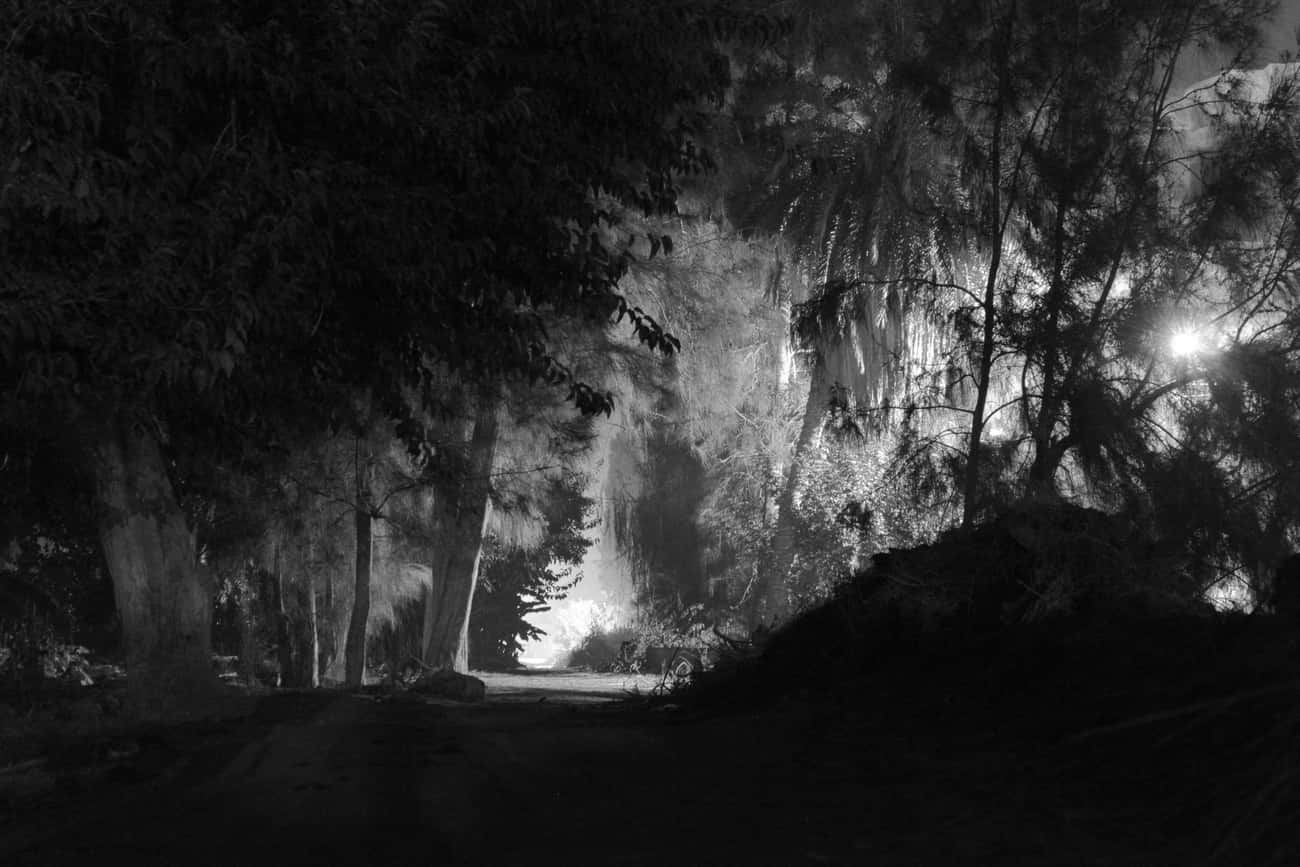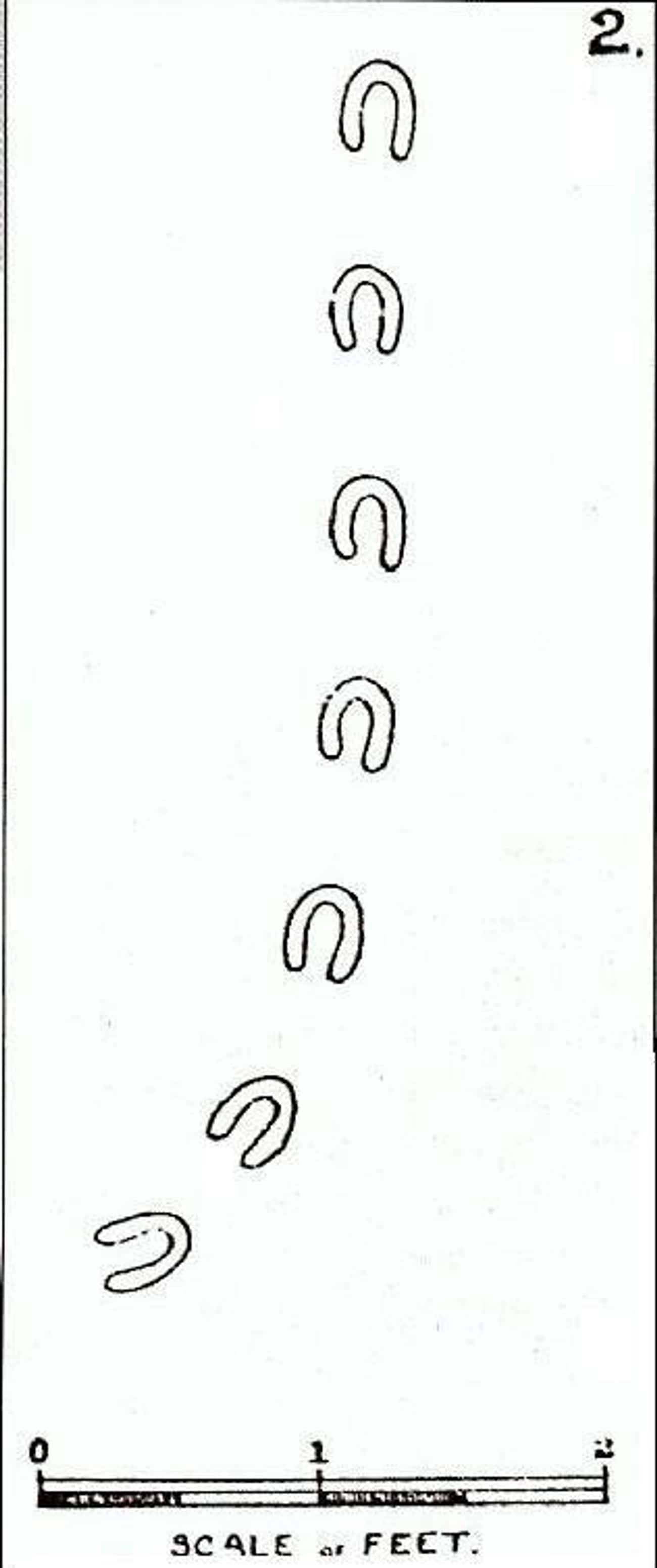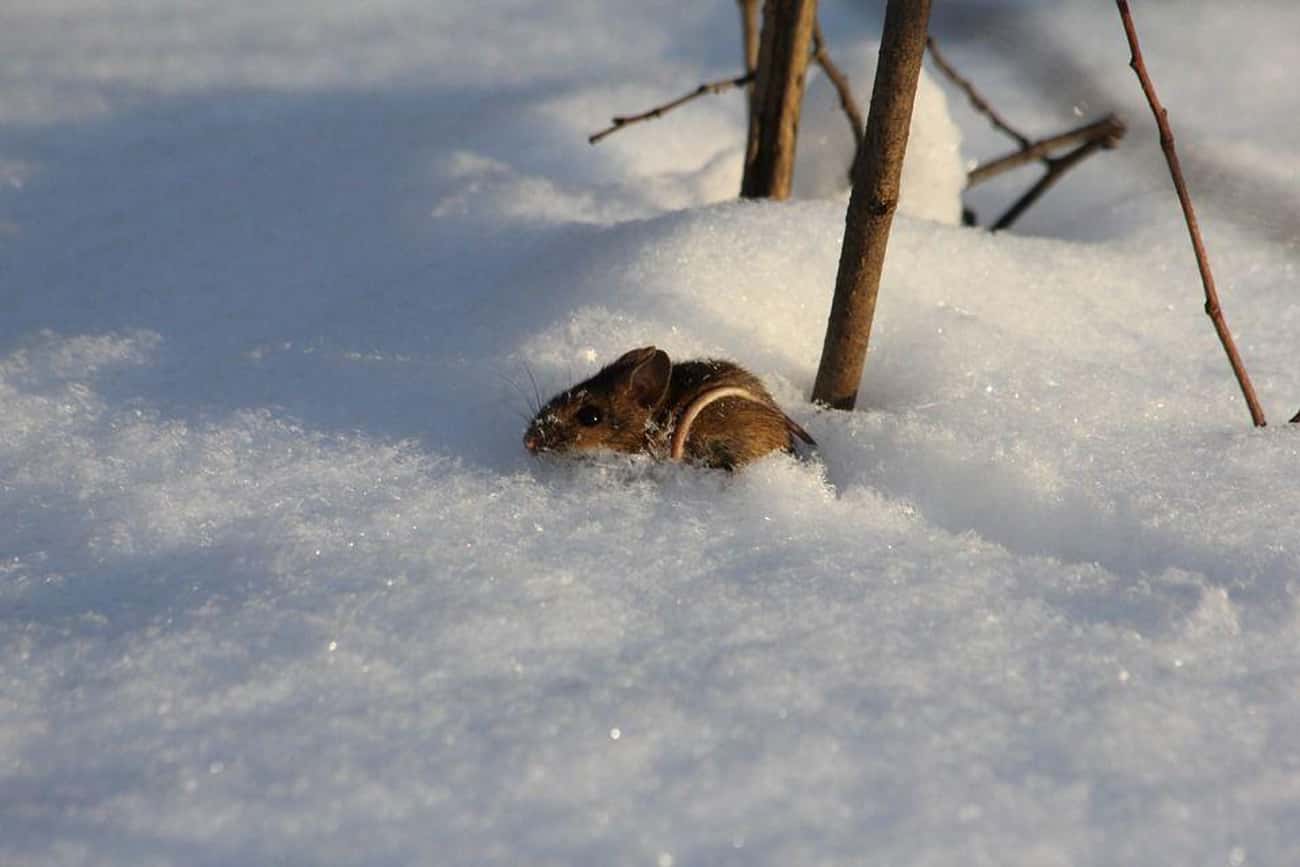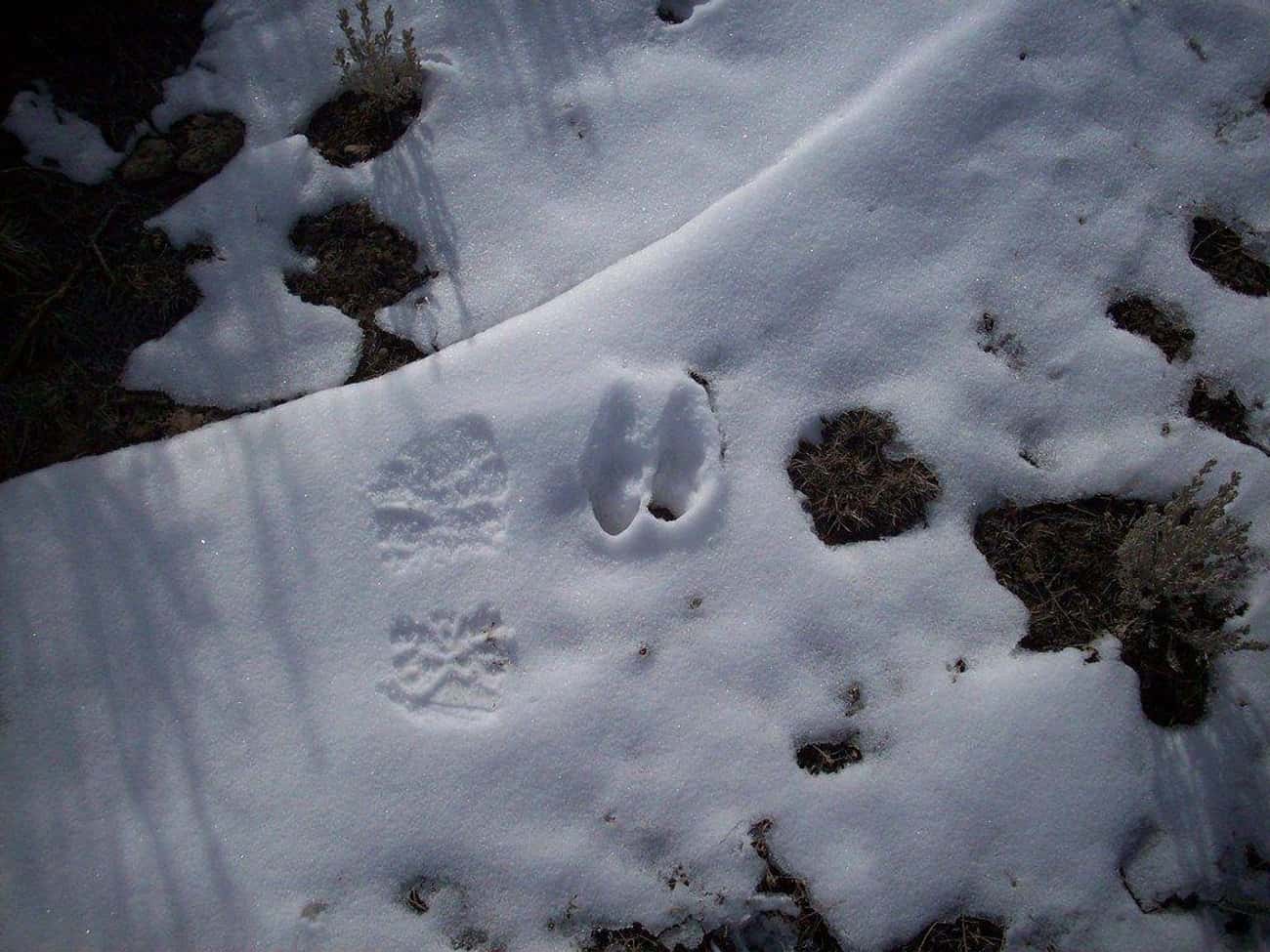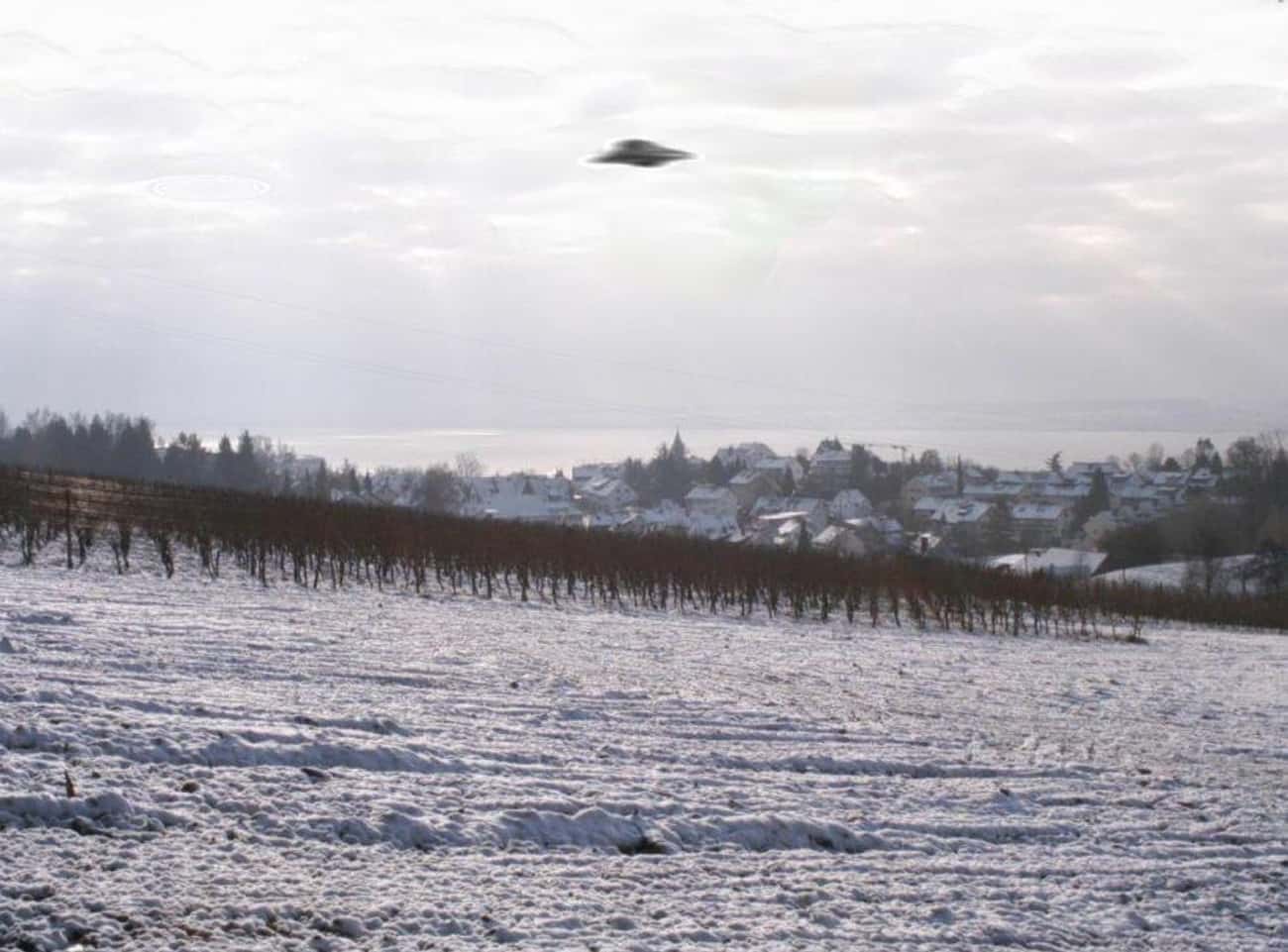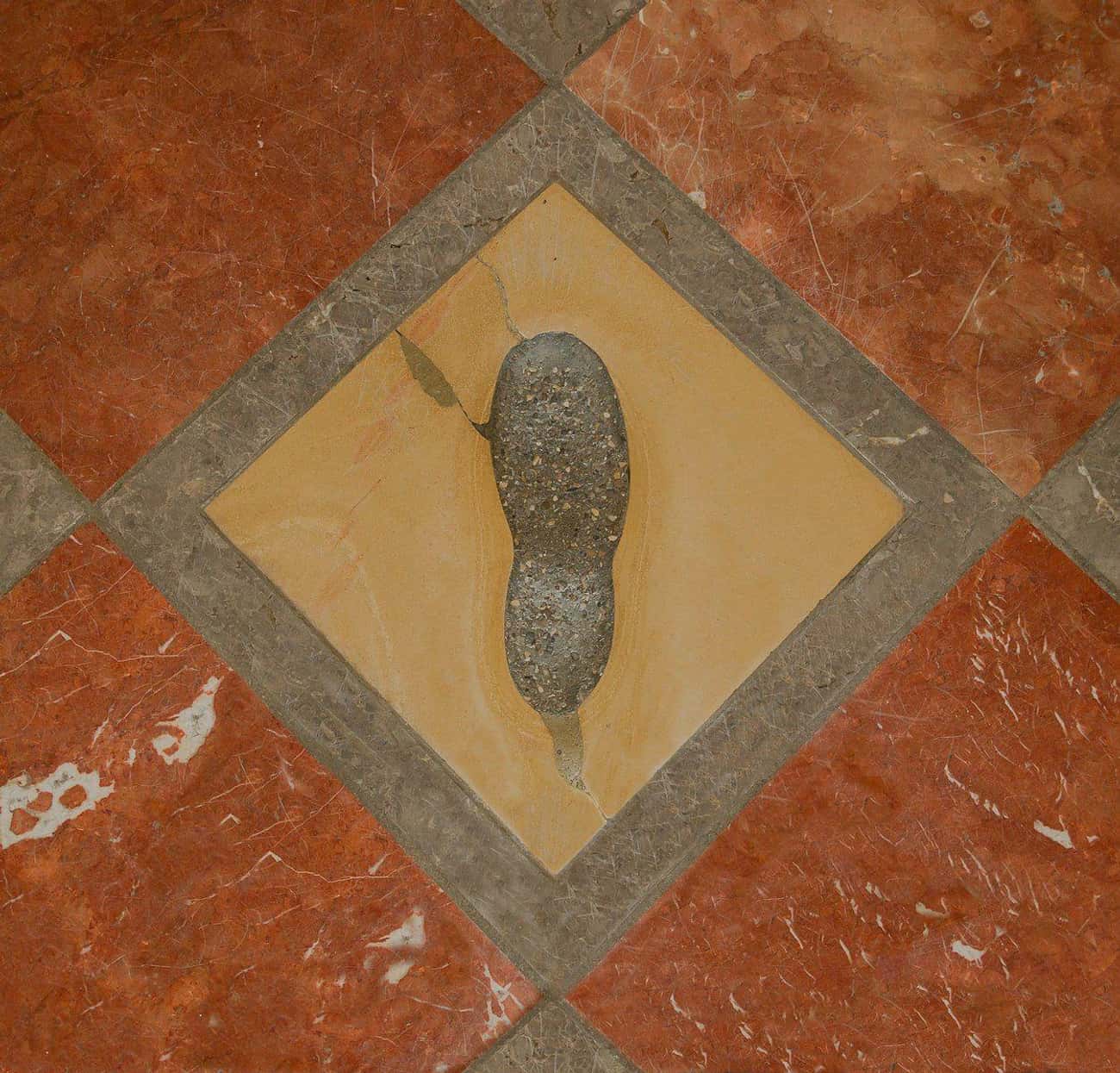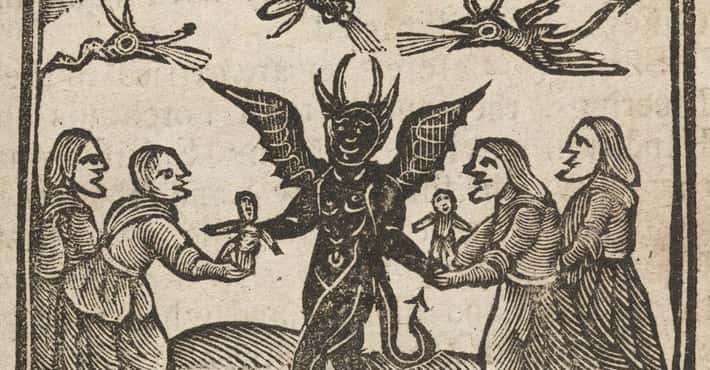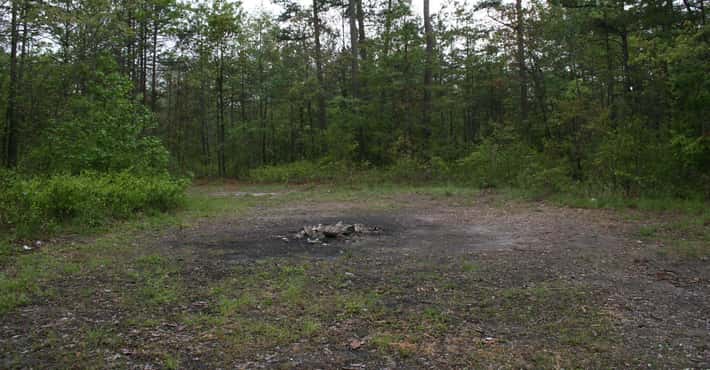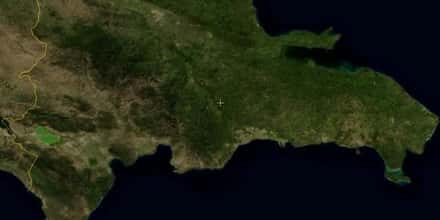The Strange Phenomenon Of ‘The Devil’s Footprints’ That Stumped England In 1855
- Photo: Andrew Smith / Wikimedia Commons / CC BY-SA 2.0
Mysterious Cloven Hoofprints Appeared In Over 30 Locations Across The English Countryside
The bizarre footprints that appeared on Devon's snowy countryside followed no discernable path, and they appeared in more than 30 different locations all over the town's south and east ends. They meandered across dozens of miles, even leading up to people's doorsteps, frightening the residents.
Most unusual, however, was the fact that they reached places no animal could go - over house roofs and haystacks, through barns, up walls, across the frozen Exe Estuary, and even through pipes no more than four inches in diameter.
The Total Distance Of The Tracks Was Between 40 And 100 Miles
While later accounts of similar phenomena have been limited in scope, Devon's "Devil's Footprints" covered up to 100 miles of land, reaching as far as Topsham, Dawlish, and Teignmouth. According to some reports, the tracks may also have reached as far south as Totnes and Torquay and as far away as Dorset or Lincolnshire.
Overall, the strange hoofprints were found spanning an area of anywhere from 40 to 100 miles, making most rational explanations seem implausible.
- Photo: Unknown / PxHere / Public Domain
Extreme Weather Perfectly Primed The Terrain For The Hoofprints
Without a fresh snowfall, the distinctive marks would have been imperceptible to locals. Moreover, while accounts of the snowfall's heaviness seem to vary, most agree not only that the previous night was particularly cold, but that a thaw occurred sometime before morning, which may have allowed animal tracks to become distorted.
Skeptics often point to this theory to explain the bizarre phenomenon of the Devil's Footprints.
- Photo: Open Library / Wikipedia / Public Domain
Locals Quickly Attributed The Prints To The Devil
The unexplained tracks shortly acquired the nickname "the Devil's Footprints" or "tracks of Satan," thanks in part to their hoof-like shape. This supernatural implication was aided by the tracks' unexplainable, miles-long path. People came to believe that the "Devil walks in Devon," as newspapers would later claim, and took to staying indoors after dark.
Some observers even claimed the tracks appeared burned or branded into the snow. This claim was seemingly substantiated in 1957 when an anthropologist and psychical researcher reported hoofprints found on a Devon beach that "looked as if each mark had been cut out of the sand with a flat iron." These 1957 hoofprints were also spaced six feet apart, implying a much longer stride than those reported in 1855.
Also in 1957, Lynda Hanson wrote to the Fortean Times detailing tracks she found in her parents' garden. Her description matched the Devil's Footprints of 1855 almost exactly, and beneath these tracks, she claimed to see dry concrete, as if the tracks had not just melted the snow, but transformed it.
- Photo: Ibrahim El-Mezayen / Wikimedia Commons / CC BY-SA 4.0
After The Footprints Appeared, Locals Were Too Afraid To Venture Out At Night
According to some accounts, people genuinely came to believe the Devil was responsible for the tracks and refused to venture outside after dark. Convinced the Devil was still prowling Devon, they claimed he could "sniff out their sins."
Further fueling their fears was the manner in which the footprints seemed to approach doorways and then stop, as if the creature responsible was keenly interested in the people on the other side.
- Photo: English Papers 1855 / Wikimedia Commons / Public Domain
First-Hand Accounts Of The Event Are Rare And Veiled In Mystery
While some sources claim the phenomenon was widely covered in newspapers at the time, first-hand accounts of the Devil's Footprints were difficult to locate for many years. Not until 1950 did accounts of the event return to the public eye.
References to the incident were discovered in records from the former vicar of Clyst St. George. Among these papers were tracings or sketches of the tracks themselves, as well as a letter to The Illustrated London News marked "not for publication."
The letter described the tracks as "the perfect impression of a donkey's hoof," but "instead of progressing as that animal would have done (or indeed as any other would have done), feet right and left, it appeared that foot had followed foot in a single line." Furthermore, the letter noted that the tracks were found in multiple parishes and that, in every case, they were the exact same size - about four inches by two inches - and always the same distance apart.
Several courageous individuals attempted to follow the strange tracks, and some reported strange findings. A story credited to Reverend J. J. Rowe and R. H. Busk claims the pair tried to follow the trail with hounds but, "At last, in a wood, the hounds came back baying and terrified."
Another report tells of a man who followed the prints to their apparent end, where he found nothing but a toad.
Skeptics Theorize That At Least Some Of The Hoofprints Were A Hoax
Since the prints in Devon were so numerous and covered such a broad area, multiple sources were likely responsible. This is one of the underlying tenets of skeptics who claim at least some of the hoofprints were likely the work of hoaxers, if the marks existed at all.
As Brian Dunning points out on the hoofprints' episode of the Skeptoid podcast, the very length of the trails discredits the notion that any one source could possibly have seen all the tracks. "In 1855, the means didn't really exist in Devon to travel 100 miles in a single day to verify the length of this track, especially when the way is obstructed by two-mile stretches of water," Dunning said.
In detailing the various fantastic properties of the footprints, Dunning reaches what he considers a foregone conclusion: "...is there really any reason to believe that this happened?"
- Photo: Alex_Kard / Pixabay / Pixabay License
Mice, Kangaroos, And Badgers Have Also Been Blamed For The Footprints
Skeptics have attempted to advance a pantheon of reasonable explanations for the Devil's Footprints. One popular theory claims that kangaroos or wallabies loosed themselves from a nearby private owner, possible a Mr. Fische.
As Brian Dunning points out on the Skeptoid podcast, "kangaroo tracks were almost certainly unfamiliar to residents of England in 1855."
Other theories include badgers, field mice - who often hop in snow, leaving distinctive V-shaped tracks - unusual weather conditions, or perhaps more likely, a combination of different elements. Some skeptics simply dismiss the entire incident as a hoax or "mass hysteria."
Mike Dash, a Welsh writer and historian, proposed that the tracks were made by several different animals, though he conceded at the end of his study that his solutions did not explain all of the tracks' elements, and they are still a mystery waiting to be solved.
One Explanation For The Tracks Involved An 'Experimental Balloon'
One theory on the hoofprints, attributed to British novelist Geoffrey Household, claimed that the tracks were actually made by some sort of "experimental balloon" accidentally released from the Devonport Dockyard. According to Household, a pair of shackles dangled from the balloon's mooring ropes, and their intermittent dragging left tracks in the snow.
Household claimed to have learned of this event from a man whose grandfather had worked at the docks in 1855. While this explanation initially seems feasible, the theory is not entirely sound.
The notion of a drifting balloon leaving uniformly spaced tracks seems implausible, and what's more, no such balloon was ever reported. According to Household's account, however, the event was covered up after the balloon caused some damage and eventually landed near Honiton.
- Photo: Alisha Vargas / Flickr / CC BY 2.0
Even Modern-Day Researchers Say Not All The Prints Can Be Explained
When Jill Wade of Woolsery, North Devon, spotted tracks similar to the Devil's Footprints in her backyard in 2009, she asked a biologist to investigate them. Graham Inglis of the Centre for Fortean Zoology noted the tracks' similarity to the Devil's Footprints from more than 150 years before but concluded that, while he was unsure what caused the tracks, they weren't of infernal origin.
"The footprints are peculiar," he told the Telegraph, "but they are not the Devil's - I don't believe the horned one has been in Woolsery."
- Photo: Stefan-Xp / Wikimedia Commons / CC BY-SA 3.0
One Theorist Claims Aliens Were Responsible For The Phenomenon
In his book The Case for the UFO, astronomer Morris K. Jessup mentions the Devil's Footprints of Devon, hypothesizing that, "No animal walks by putting one foot directly in front of the other, so these holes in the snow were made with mechanical precision by something mechanical. Therefore, let's make the broad conclusion that something mechanical passed over Devon in the air."
Jessup goes on to theorize that the marks were possibly the result of some type of ray or beam.
Other Cases Have Been Reported Around The World
While the Devil's Footprints in Devon are the most famous instance of this phenomenon, other occurrences of similar tracks appearing in the snow range from the Kerguelen Islands near Madagascar to Belgium and Scotland and back to Devon.
Most predate widespread photography, but the most recent instance occurred in 2009 when Jill Wade of North Devon reported similar tracks forming an arc across her backyard.
In 1945, tracks were found in the snow behind Belgium's Chateau de Morveau. Like Devon's 1855 footprints, this set moved in a straight line and looked like the prints of an animal with cloven hooves.
In fact, one observer specifically compared the 1945 tracks to Devon's footprints. Perhaps the strangest quality of the 1945 set was that they moved over the tops of snowdrifts with no evidence of any weight causing them to sink deeper into the snow.
- Photo: Jebulon / Wikimedia Commons / Public Domain
This Incident Was Just One In A Long History Of Devil's Footprints
Several cases similar to Devon's Devil's Footprints have been reported all over the world. A cathedral in Munich is home to a single tile bearing a footprint said to have been made by a frustrated Devil, tricked into aiding the cathedral's construction.
Similarly, a stone in a rock wall in Manchester, ME, bears marks left behind when a construction worker struck a deal with the Devil to move the large stone. At the Devils' Gate Dam in Pasadena, CA, photographers have captured images of claw marks in stone.
A comic book series called The Devil's Footprints, written by Scott Allie, received its title and inspiration from a legend Allie remembers from his hometown:
The Devil reportedly showed up at the local church in the old town, and the priest chased him up the steeple. The Devil jumped, and left one footprint in the stone outside.


